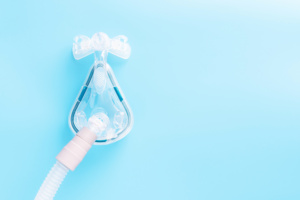Is Your Sleep Apnea Under Control?
Article By | StatePoint Media
High-quality sleep is fundamental to your health and happiness. However, for the 10-30% of U.S. adults living with sleep apnea, a good night’s rest is not guaranteed.
Obstructive sleep apnea is a respiratory condition where airways narrow during sleep, causing short periods when you’re not breathing. Incredibly common, it’s estimated that there are millions of Americans with undiagnosed and untreated sleep apnea. Uncontrolled sleep apnea is associated with a number of challenging symptoms, including Excessive Daytime Sleepiness (EDS). This symptom, which can linger even after one begins being treated for sleep apnea, is often described as feeling excessively drowsy. If you experience EDS, you might even fall asleep when you shouldn’t. For example, sleepiness at work or while you’re watching kids, along with drowsy driving, could put you and others at an increased risk of accidents and injury.
Not everyone being treated for sleep apnea experiences complete symptom relief. This is why the American Lung Association, with support from Jazz Pharmaceuticals, is encouraging the public to recognize their own or a loved one’s sleep challenges.
“The first step to better sleep is to share your unresolved symptoms with your healthcare provider. If you are diagnosed with sleep apnea after participating in a sleep study, your doctor will work with you to manage the condition,” says Dr. Atul Malhotra, a board-certified pulmonologist, intensivist and research chief of Pulmonary, Critical Care and Sleep Medicine at UC San Diego.
Dr. Malhotra recommends setting up a follow-up appointment within three months after you begin treatment — or sooner if problems arise, and then on an annual basis after that.
“Unfortunately, some patients continue to experience lingering symptoms,” says Dr. Malhotra. “It’s important to address these concerns with your doctor.”
You’ll know if your treatment is working based on how you’re feeling. Are you less sleepy during the day? Do you have higher energy levels? Does your bed partner notice less snoring, gasping or sleep disruptions? To help your doctor understand what you’re experiencing at your appointment, it’s important to distinguish fatigue, which is a lack of energy, from sleepiness, which is an inability to stay awake.
For more information about sleep apnea and EDS visit lung.org.
Everyone deserves the benefits of high-quality sleep. If you have difficulty getting a good night’s rest, be sure to talk to your doctor about your symptoms right away. (StatePoint)
